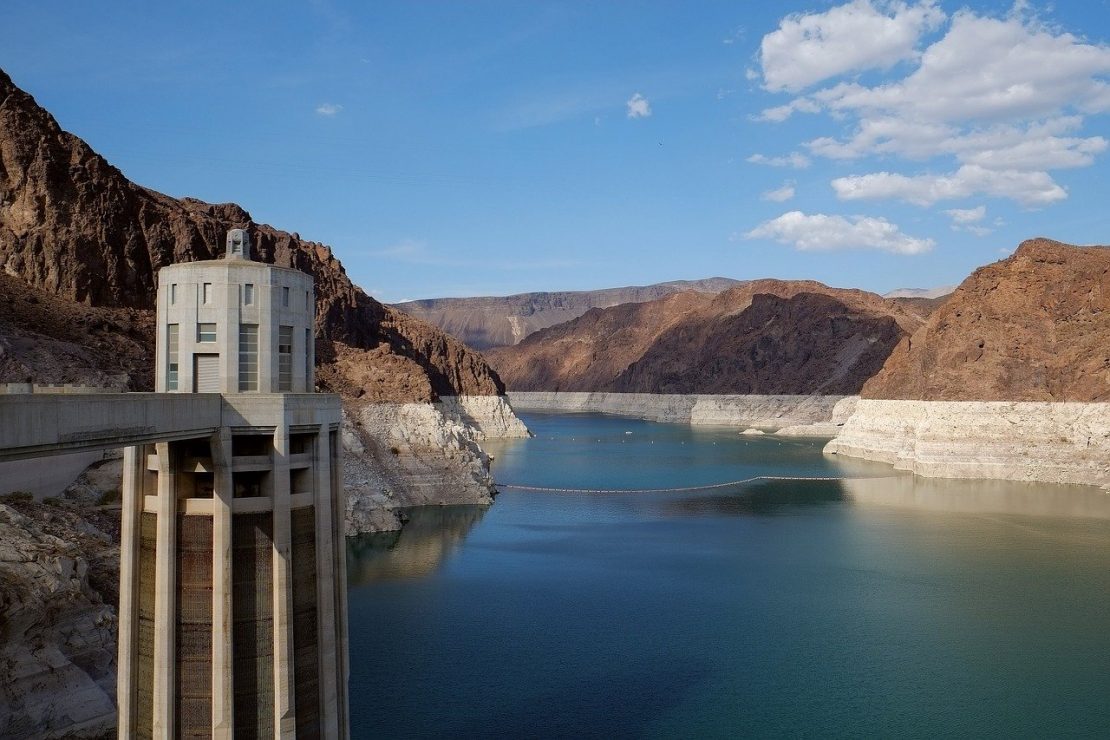
Dear Eartha, I came across a recent headline that said Lake Mead is experiencing a historic water shortage – what’s going on!?
There’s no question about it – the West is dry. Locally, we’re experiencing changes like hotter weather, shrinking snowpack, and increased fire danger. And now, miles away, the situation in Lake Mead, the largest reservoir in the U.S. is exposing a fast-approaching future with less water.
The “bathtub ring” images of Lake Mead recently shared across the news accompanied a string of extreme weather events – unbearably-high temperatures, devastating flash floods, and mega-wildfires – that are unfortunately only the beginning of what’s to come. What makes the Lake Mead headlines alarming is that the low water levels are projected to trigger a first-ever water shortage declaration from the federal government this year. Before we dive into what this means and what’s causing the concerningly low levels, let’s review some of the history surrounding Lake Mead – bear with me, it might be a little dry (pun-intended).
Formed in the early 1930s by the Hoover Dam on the Colorado River, Lake Mead currently supplies water to about 25 million people across Arizona, California, and Nevada as well as parts of Mexico. It gets most of its water from snowmelt and runoff from the Colorado, Wyoming, and Utah Rocky Mountains. And while some late season snowstorms helped push Colorado’s snowpack to nearly 100% of normal levels, drought conditions and high temperatures across the West are drying up meltwater before it can reach streams that supply the reservoir.
Now sitting at just 36 percent capacity, it’s almost certain that the Lake Mead water shortage declaration will take effect within a month. What determines this declaration? In Lake Mead’s case, it’s when water levels fall below 1,075 feet – the level negotiated by the Colorado River Compact. The Compact, an agreement between the seven states that rely on the Colorado River’s waters – Arizona, California, Colorado, Nevada, New Mexico, Utah, and Wyoming – determines how the water is allocated among each state for consumption.

From the beginning, the Compact was flawed because it promised more water than was actually in the river. And framers of the compact took for granted that the climate in the West would remain consistent. But climate change is increasing temperatures, and with that comes increased evaporation, meaning less water from rain, snow, and streams makes it to the Colorado River. Now in the throes of an unrelenting decades-long drought across the Southwest, the photos of Lake Mead expose our overconsumption of both water and fossil fuels.
So, who will the water shortage declaration impact? Arizona agriculture will be the hardest hit, with farmers relying on groundwater sources or leaving fields unplanted. The Central Arizona Project, Arizona’s largest source of water, will be forced to divert 30 percent less water from the Colorado River than usual. If water decline continues, California will be the next affected. While this might feel far from home, remember that a lot of produce we eat is grown using this water.
Reservoirs like Lake Mead and its counterpart Lake Powell are also significant generators of energy. Lake Mead’s water is used to spin turbines at the Hoover Dam which supplies electricity to 1.3 million people. If water levels drop to what’s called “dead pool,” there’s no longer enough water to spin the turbines, and electricity can no longer be generated – a situation not nearly as funny as the similarly named movies.
I know, quite the gloomy topic. But it’s one that needs immediate attention and action. What can we do? While state officials, agencies, and local water coalitions work to develop a plan, the best thing we can do as consumers is to actively reduce our water use. Remember, the average person in the United States consumes 80 – 100 gallons of water per day! Imagine yourself buying that many gallons of water at the grocery store every day. Now, consider how you could use less – much less.
At some point, we all might experience water restrictions. If we can start consciously using less water on a day-to-day basis, the better off we, and the Colorado River, will be.
